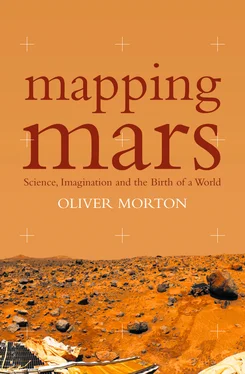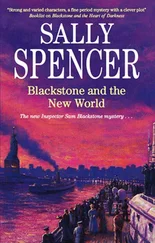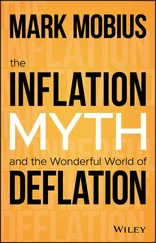Another part of the answer is that in Lowell’s day a belief in life on Mars was largely without consequences. As Alfred Lord Tennyson noted as early as 1886, our astronomical observations of planets and our dreams of what might transpire on them were separated by a vast gulf:
Hesper – Venus – were we native
to that splendour or in Mars,
We should see the Globe we groan in,
fairest of their evening stars.
Could we dream of wars and carnage,
craft and madness, lust and spite,
Roaring London, raving Paris,
In that point of peaceful light?
Life on Mars might be likely, it might be inevitable, it might even be intelligent, but the possibility of people ever actually visiting Mars – or Martians visiting earth – was more or less pure fancy. This made Martians fascinating but not important, rather in the way of dinosaurs – another turn-of-the-century craze. Whatever evidence scientists might find of dinosaurs, or speculations they might produce about them, without a time machine encounters with dinosaurs were impossible. Similarly, without a space machine, encounters with Martians were impossible.
So while there might be intelligent Martians, there could be no links of history or interest between them and us. This gave the Martians an interesting rhetorical niche that they quickly made their own: ‘The man from Mars’ became the quintessential intelligent outsider, unswayed by any relevant prior worldliness, unattached to custom. He retains that position to this very day; his natural habitat is the newspaper op-ed page and other didactic or satirical environments, but he turns up elsewhere, too. Temple Grandin, the highly articulate woman with autism in Oliver Sacks’s An Anthropologist on Mars , applies the titular image to herself as a way of stressing her disassociation from the ways of the world around her; the wonderfully innocent yet artfully contrived metaphors of the poems in Craig Raine’s A Martian Sends a Postcard Home led to a whole school of poetry (if a small one) being dubbed ‘Martianism’. One of the most influential science fiction novels of the twentieth century, Robert Heinlein’s Stranger in a Strange Land , achieves its impact by showing us the earth through the eyes of a true ‘man from Mars’ – a human brought up on Mars by Martians.
Rhetorical devices aside, believing in Martians made little difference to the earthly lives of Lowell’s readers and this, I suspect, is one of the things that made them easy to believe in. Another spur to belief was the difference that the existence of Martian minds made to the way earthly imaginations saw Mars. One of the Copernican ways in which Martians made the planet Mars a world like the earth was that they made it a place experienced from the inside, a site for subjectivity. Without minds, Lowell argued, Mars and the other planets were ‘mere masses of matter’ – places without purpose, frightening voids. With minds, they were worlds.
To Lowell, there was no really useful or involving way to think about a planet except as a world inhabited and experienced by mind. The space age, though, has brought us new ways of seeing beyond the earth and changed our way of thinking about what we see. Our spacecraft, tools of observation but hardly observers in themselves, have shown us things we know cannot be witnessed directly or experienced subjectively, but which can still fascinate. The post-Copernican elision between worlds (structures of shared experience and history) and planets (vast lumps of rock and metal and gas that orbit a fire yet vaster) has been rewritten. Yes, the earth that is our world is also a planet. But not all planets are worlds. We no longer need the point of view of a mythical Martian to imagine Mars, or to convince us that Mars might be worth imagining. Now that our spacecraft have been there we can know it intimately from the outside, know it as an objective body rather than a subjective experience. We can measure and map its elemental composition and its wind patterns and its topography and its atmospheric chemistry and its surface mineralogy. The planet Mars can fascinate us just for what it is.
If the space age has opened new ways of seeing mere matter, though, it has also fostered a strange return to something reminiscent of the pre-Copernican universe. The life that Lowell and his like expected elsewhere has not appeared, and so the earth has become unique again. The now-iconic image of a blue-white planet floating in space, or hanging over the deadly deserts of the moon, reinforces the earth’s isolation and specialness. And it is this exceptionalism that drives the current scientific thirst for finding life elsewhere, for finding a cosmic mainstream of animation, even civilisation, in which the earth can take its place. It is both wonderful and unsettling to live on a planet that is unique.
Yet if the earth is a single isolated planet, the human world is less constrained. The breakdown of the equation between planets and worlds works both ways. If there can now be planets which are not worlds, then there can be worlds that spread beyond planets – and ours is doing so. Our spacecraft and our imaginations are expanding our world. This projection of our world beyond the earth is for the most part a very tenuous sort of affair. It is mostly a matter of imagery and fantasy. Mars, though, might make it real – which is why Mars matters.
Mars is not an independent world, held together by the memories and meanings of its own inhabitants. But nor is it no world at all. More than any other planet we have seen, Mars is like the earth. It’s not very like the earth. Its gravity is weak, its atmosphere thin, its surface sealess, its soil poisonous, its sunlight deadly in its levels of ultraviolet, its climate beyond frigid. It would kill you in an instant. But it is earthlike enough that it is possible to imagine some of us going there and experiencing this new part of our human world in the way we’ve always experienced the old part – from the inside. The fact that humans could feasibly become Martians is the strongest of the links between Mars and the earth.
At the beginning of the space age – at the moment when it became clear to all that Mars might indeed one day be experienced subjectively – the International Astronomical Union stepped in to clean up the planet’s increasingly baroque nomenclature. Thanks to the efforts of Schiaparelli, Lowell and Eugène Michael Antoniadi, whose beautifully drawn charts had become the standard, the planet had come to boast 558 names for an uncertain number of features. In 1958 the IAU experts settled on 128 named regions and features, with 105 of the names coming from Schiaparelli. Then the first spacecraft images came back and the stalwarts of the IAU needed not only more names but also new rules by which names could be assigned. It was at this point that the convention of naming craters for people with an interest in the planet was laid down. Proctor’s astronomical pantheon was reconvened – Dawes, Secchi, Mädler, Beer and the rest of them all got craters, as did Proctor himself.
And in 1972 the International Astronomical Union established for all time the precise location of the Martian meridian. Lacking a transit circle made of good Ipswich steel – or, for that matter, any ancient monuments – the IAU’s working group had to use a natural landmark for their zero. They chose the geometrical centre of a small, nicely rounded crater in the middle of a larger crater fifty-six kilometres across. They called that larger crater Airy.
There is a passage in the oeuvre of William F. Buckley Jr, in which he remarks that no writer in the history of the world has ever successfully made clear to the layman the principles of celestial navigation. Then Buckley announces that celestial navigation is dead simple, and that he will pause in the development of his narrative to redress forever the failure of the literary class to elucidate this abecederian technology. There and then – and with awesome, intrepid courage – he begins his explication: and before he is through, the oceans are in orbit, their barren shoals are bright with shipwrecked stars.
Читать дальше












